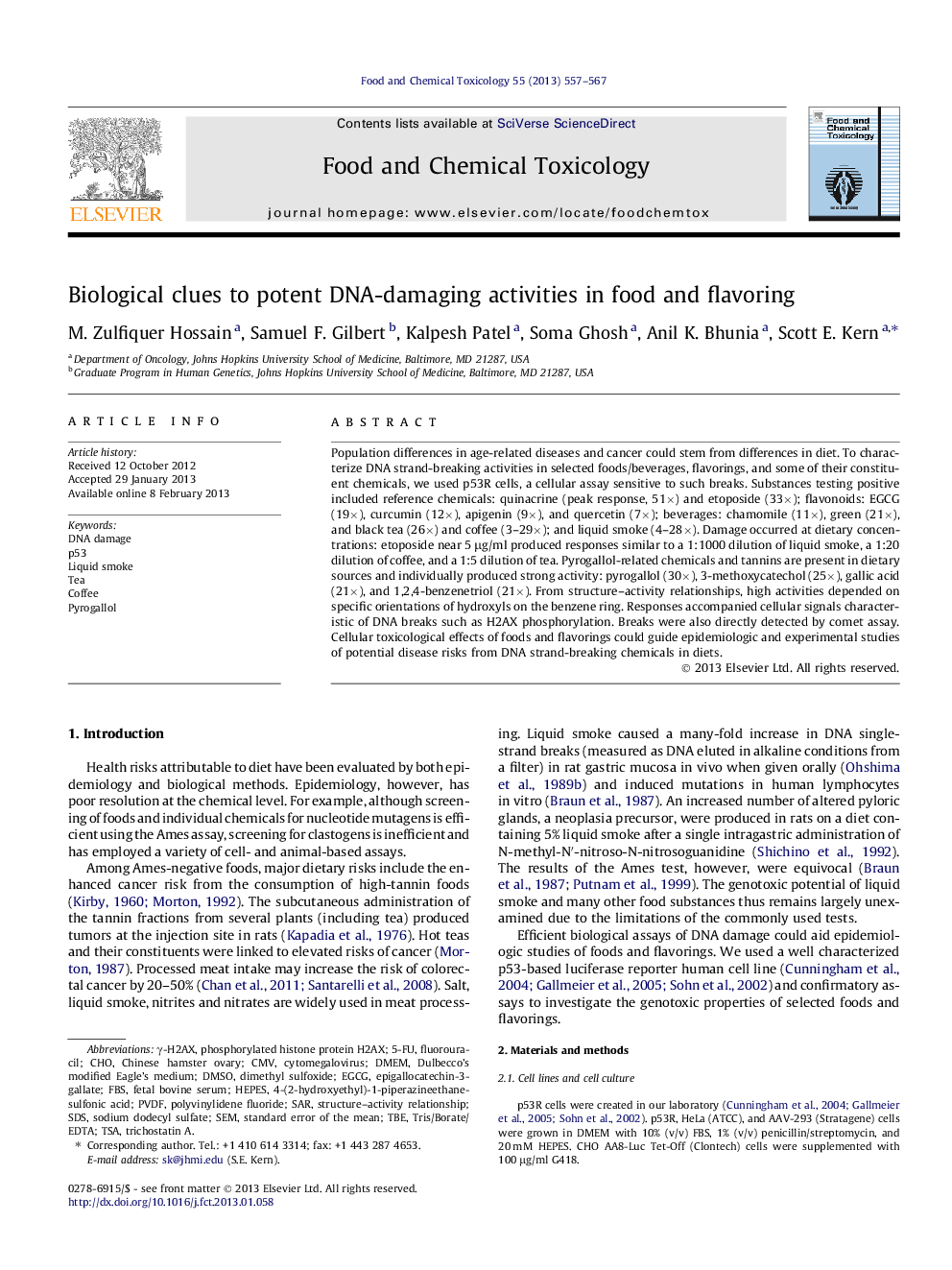| Article ID | Journal | Published Year | Pages | File Type |
|---|---|---|---|---|
| 5851614 | Food and Chemical Toxicology | 2013 | 11 Pages |
Abstract
⺠We used a cellular biological (p53R) assay to screen for DNA-damaging activity in selected foods and flavorings. ⺠Potent DNA-damaging activity was seen in tea, coffee, and liquid smoke at concentrations consumed dietarily. ⺠DNA double-strand breaks were confirmed by the comet assay and immunoblots reporting H2AX phosphorylation. ⺠Pyrogallol-like substances are likely to be a major source of genotoxic activity in food and flavoring. ⺠These findings have implications for evaluation of dietary risks in epidemiologic studies and in designing safer diets.
Keywords
p53PyrogallolTSAPVDFHEPESEGCGEpigallocatechin-3-gallateγ-H2AXTBEFBSSDSDMEMfluorouracilSAR5-FUtris/borate/EDTA4-(2-hydroxyethyl)-1-piperazineethanesulfonic acidDMSODNA damageChoChinese Hamster OvaryTrichostatin Astandard error of the meanLiquid smokeDimethyl sulfoxideStructure–activity relationshipsodium dodecyl sulfatefetal bovine serumCMVcytomegalovirusCoffeeDulbecco’s modified eagle’s mediumSEMPolyvinylidene fluorideTEA
Related Topics
Life Sciences
Agricultural and Biological Sciences
Food Science
Authors
M. Zulfiquer Hossain, Samuel F. Gilbert, Kalpesh Patel, Soma Ghosh, Anil K. Bhunia, Scott E. Kern,
